

Palazzo Vescovile
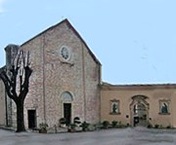
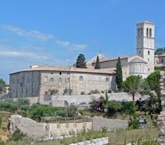
Palazzo Vescovile, Rear of the complex,with the apse
to the right of Santa Maria Maggiore of Santa Maria Maggiore to the right

Early History
The bishops of Assisi probably had a palace here, next to the original Duomo of Santa Maria Maggiore (to the left), from the time that the church was built. (It was first documented in 963). Bishop Ugone built a new episcopal residence on the site of the Palazzo dei Canonici della Cattedrale in ca. 1035, when the adjacent San Rufino became the Duomo of Assisi. However, the bishops returned here in ca. 1082.
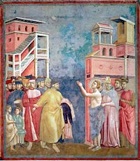
Present Palace
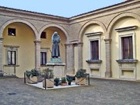
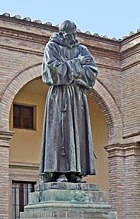
Frescoes in the Galleria dei Vescovi (1653-6)
Cardinal Bishop Paolo Emilio Rondanini commissioned the frescoes of this room in the palace, which are attributed to Giacomo Giorgetti. They depict the the Rondanini arms and personifications of the virtues claimed for the family. This web page on the site of GER-SO Srl illustrates their work on the restoration of these frescoes after the earthquake of 1997.
Art from Palazzo Vescovile
St Francis blessing Assisi (1640)
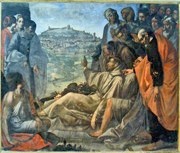
A document of 1806 records that Bishop Tegrimo Tegrimi (1630-41) commissioned Cesare Sermei to paint frescoes of scenes from the life of St Francis for the Sala Maggiore (main hall) of Palazzo Vescovile. Unfortunately, they were destroyed when the palace was restored after the earthquake of 1832. This panel, which was moved from Palazzo Vescovile to San Rufino in ca. 1685 presumably formed part of the same project: original designs for it by Cesare Sermei survive, and a lost inscription bore the date 1640.
The panel, which is now in the Museo Diocesano, depicts St Francis blessing Assisi as he is being taken from Palazzo Vescovile to the Portiuncula, which was where he wanted to die. The figure standing on the right is probably a portrait of Bishop Tegrimi.
St John's Apparition of the Virgin on Patmos (17th century)
This panel by Giacomo Giorgetti was documented in Oratorio di San Crispino in 1875. It was subsequently moved to Palazzo Vescovile and is now in the Museo Diocesano.
Seminario Vescovile
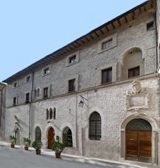

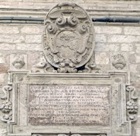
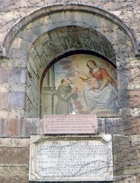
Return to Monuments of Assisi.
Return to Walk II (Palazzo Vescovile) or Walk III (Seminario Vescovile).
Return to the home page on Assisi.

